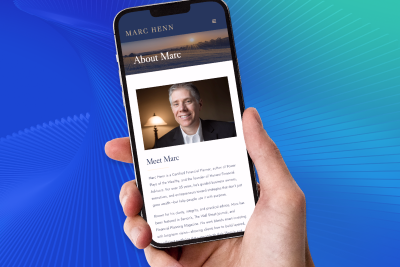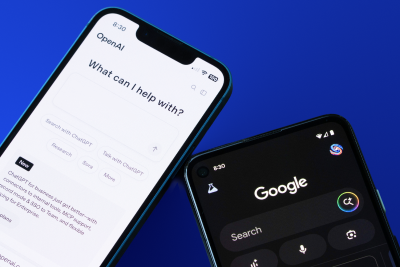AI Tools Marketers Actually Use
August 5, 2025
Artificial intelligence (AI) is no longer a vague concept. It is embedded in the tools marketers and designers use every day. From content creation and email automation to analytics and personalization, AI helps deliver real results without replacing creativity or strategic thinking.
With hundreds of AI tools flooding the market, the real challenge doesn’t lie in access, but in making smart choices. Which platforms offer genuine value? Which tools integrate smoothly with existing workflows? Which ones will your team adopt and use beyond the free trial period?
These insights are based on tools that marketers, designers, writers, and growth teams actively use to produce better work more efficiently.
AI Marketing Tools Driving Results Today
AI continues to transform marketing workflows in meaningful ways. Instead of chasing every new app, it’s more effective to focus on the main kinds of AI tools marketers depend on to boost efficiency, creativity, and performance.
Generative Content and Design Tools
These tools speed up the production of marketing assets, including written content and visual designs. They allow teams to create more work faster, often with improved quality.
Used by: Content marketers, social media managers, brand designers, email marketing teams
Notable tools:
- ChatGPT and custom GPTs – Provides flexible drafting and ideation through natural language conversations
- Perplexity – Powers fast research through accurate, real-time information with cited sources
- Jasper – Creates long-form marketing copy, blog drafts, and tone-controlled text
- Figma AI – Generates design variations, streamlines layouts, and accelerates design operations
- Canva AI (Magic Tools) – Enables quick mockups and social media posts creation
Pro tip: Ideate and draft content with ChatGPT or Jasper, then use Perplexity to verify information and site sources where needed.
Marketing Automation with Built-in Intelligence
AI-driven automation is evolving beyond basic rule-based triggers. It now predicts customer behavior, personalizes outreach, and optimizes campaigns with less manual input.
Used by: CRM managers, growth marketers, retention teams
Notable tools:
- HubSpot AI (Breeze) – Suggests subject lines, assists content creation, and builds preliminary workflow automation based on natural language processing
- Klaviyo AI – Offers predictive send times and personalized product recommendations
- Zapier AI agents – Enables complex workflows with conditional logic (“If a customer hasn’t opened the last three emails, pause their sequence.”) between multiple platforms
Pro tip: Use generative content and design tools like ChatGPT to craft messaging, then use tools like HubSpot or Klaviyo to automate how they arrive at your target audience’s front door (or inbox).
Behind-the-scenes Productivity Tools
AI-powered productivity tools are going beyond simple task reminders and note transcription. They capture key takeaways from conversations, assign tasks automatically, and synchronize projects across platforms.
Used by: Project managers, account managers, operational teams, leadership teams
Notable tools:
- Fathom AI Notetaker – Records meetings, generates concise summaries, and extracts action items in real-time. Integrates directly with HubSpot to auto-create follow-up Tasks post-call.
- HubSpot Task Automation – Automates task creation from CRM activities, emails, and AI-driven suggestions. Helps align sales and marketing teams by surfacing next steps without manual task entry.
- Wrike & HubSpot Synchronization – Ensures Tasks created in HubSpot (whether AI-suggested or Fathom-generated) are automatically synced into Wrike projects, keeping execution teams aligned and reducing communication gaps.
- Grammarly Business AI – Enhances clarity and tone across internal and client communications, ensuring team members communicate effectively without spending extra time proofreading emails and documents.
Pro tip: If you find yourself saying, “Ugh, it takes me so long to do this same exact thing every single time.” it’s likely something you can automate.
How to Choose the Right AI Tools and Avoid the Rest
Not every AI tool belongs in your marketing stack. Use these criteria to determine what’s worth adopting:
- Integration with core systems: If a tool cannot connect to your CMS, CRM, or design software, it may create unnecessary friction
- Ease of learning: Avoid tools with steep learning curves unless you plan to invest in thorough onboarding
- Workflow impact: The right AI tools reduce repetitive tasks and save time. Tools that add extra steps are likely to hinder productivity
- Alignment with brand standards: Tools like Jasper and Figma AI can be customized to match your tone and visual identity. If a tool cannot adapt, it may not be a good fit
- Clear success criteria: Define measurable goals such as faster email production, improved ad performance, or reduced reporting time before adoption
Real Use Cases: How Marketers Apply AI Today
- AI-assisted design variants: A design team used Figma AI to quickly generate multiple ad variations, accelerating creative testing and helping surface performance insights faster.
- Automated brief creation: A content lead employed ChatGPT to draft SEO blog outlines using Semrush keyword data, significantly reducing manual prep time and improving consistency across briefs.
- AI-powered task syncing: A marketing team integrated Fathom AI with HubSpot and Wrike to automate task creation from client calls. Action items were instantly captured, assigned, and synced across platforms, streamlining project handoffs and reducing missing follow-ups.
Avoiding “Shiny Object Syndrome”
New AI tools frequently appear, each claiming to revolutionize marketing. Most fall short. Keep your toolset purposeful and manageable by following these guidelines:
- Focus on solving specific workflow challenges rather than chasing the latest tools
- Run small pilot projects with one campaign, workflow, or team before full-scale adoption
- Prioritize outcomes over features. If a tool saves your team five or more hours per week, it delivers ROI. If it generates more meetings, it probably won’t stick
Introducing AI Tools to Your Team Without Disruption
- Assign a champion: Choose a team member to lead trials—a designer for visual tools or a content lead for generative writing, for example
- Document workflows: Develop clear standard operating procedures describing when and how to use the tool, expected outputs, and quality control measures
- Encourage collaboration: Use AI as a starting point rather than a final product. For instance, generate multiple email subject line options with ChatGPT and let the team refine or test them
- Review regularly: Schedule quarterly assessments to determine what is working, what isn’t, and which tools may have become redundant
Why the Best AI Tools Are the Ones That Simply Work
Effective AI tools assist teams quietly and efficiently. They don’t disrupt but empower marketers to concentrate on their strengths: creativity, strategy, insights, and storytelling.
Experimentation is important, but it must remain grounded. Solve real workflow challenges and scale solutions that already show promise. That approach turns AI from a distraction into a valuable asset.
At Prismo Marketing, our comprehensive suite of services covers everything for a standout digital brand. From crafting visually stunning and user-friendly websites to boosting online visibility with results-driven SEO, we ensure discoverability and engagement. Our experts collaborate to create a memorable and cohesive brand image, incorporating creative graphic design that makes a visual impact, from logos to marketing collateral. Additionally, streamline your business processes with seamless HubSpot CRM integration. We’re here to turn your digital aspirations into a reality. Ready to elevate your online presence? Contact us today, and let’s get started on propelling your brand to new heights.
Featured Blogs


WRITTEN BY
Taylor Dolinger
Taylor brings a distinctive blend of expertise in graphic design, UI/UX, HubSpot CRM implementation, and marketing automation strategies. She's passionate about bridging the gap between aesthetic design and functional user experiences, ensuring that brands look impeccable, deeply resonate with their audiences, and efficiently reach their target markets.

